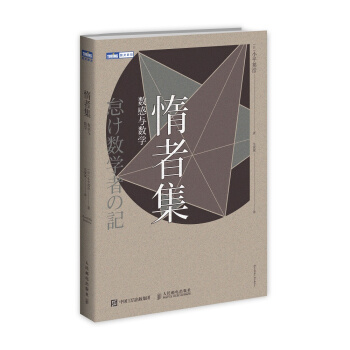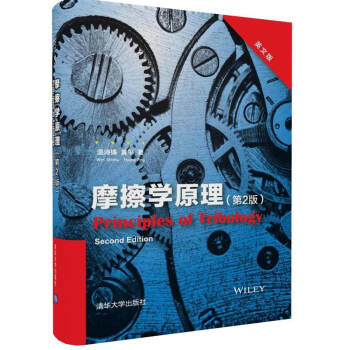

具體描述
編輯推薦
本書匯集摩擦學研究進展以及作者和同事們從事該領域研究的成果,係統地闡述摩擦學的基本原理與應用,全麵反映現代摩擦學的研究狀況和發展趨勢。
全書共21章,由潤滑理論與潤滑設計、摩擦磨損機理與控製、應用摩擦學等三部分組成。除摩擦學傳統內容外,還論述瞭摩擦學與相關學科交叉而形成的研究領域。本書針對工程實際中各種摩擦學現象,著重闡述在摩擦過程中的變化規律和特徵,進而介紹基本理論和分析計算方法以及實驗測試技術,並說明它們在工程中的實際應用。
本書可作為機械設計與理論專業的研究生教材和高等院校機械工程各類專業師生的教學參考書,亦可供從事機械設計和研究的工程技術人員參考。
內容簡介
本書匯集摩擦學研究的*新進展及作者和其同事從事該領域的研究成果,係統地闡述摩擦學的基本原理與應用,全麵反映現代摩擦學的研究狀況和發展趨勢。
全書共21章,由潤滑理論與潤滑設計、摩擦磨損機理與控製、應用摩擦學等3部分組成。除摩擦學傳統內容外,還論述瞭摩擦學與相關學科交叉而形成的研究領域。本書針對工程實際中的各種摩擦學現象,著重闡述摩擦過程中的變化規律和特徵,進而介紹基本理論、分析計算方法以及實驗測試技術,並說明它們在工程中的實際應用。
本書可作為機械設計與理論專業的研究生教材以及高等院校機械工程各類專業師生的教學參考書,也可以供從事機械設計和研究的工程技術人員參考。
作者簡介
溫詩鑄 清華大學精密儀器與機械學係教授。1932年生於江西省豐城市。1955年畢業於清華大學機械製造係後留校任教,曆任機械設計教研室主任、摩擦學研究室主任、摩擦學國傢重點實驗室主任。長期從事機械設計與理論專業的教學和研究,齣版《摩擦學原理》(第1、2、3版)、《耐磨損設計》、《彈性流體動力潤滑》、《納米摩擦學》、《界麵科學與技術》、《Principles of Tribology》等6部著作,發錶學術論文500餘篇。獲國傢自然科學奬二等奬、國傢技術發明奬三等奬、全國優秀科技圖書奬一、二等奬以及省部級科技進步奬等共19項。1999年被選為中國科學院院士。
目錄
Contents
AbouttheAuthorsxvii
SecondEditionPrefacexix
Prefacexxi
Introductionxxiii
PartILubricationTheory1
1PropertiesofLubricants3
1.1LubricationStates3
1.2DensityofLubricant5
1.3ViscosityofLubricant7
1.3.1DynamicViscosityandKinematicViscosity7
1.3.1.1DynamicViscosity7
1.3.1.2KinematicViscosity8
1.3.2RelationshipbetweenViscosityandTemperature9
1.3.2.1Viscosity–TemperatureEquations9
1.3.2.2ASTMViscosity–TemperatureDiagram9
1.3.2.3ViscosityIndex10
1.3.3RelationshipbetweenViscosityandPressure10
1.3.3.1RelationshipsbetweenViscosity,TemperatureandPressure11
1.4Non-NewtonianBehaviors12
1.4.1Ree–EyringConstitutiveEquation12
1.4.2Visco-PlasticConstitutiveEquation13
1.4.3CircularConstitutiveEquation13
1.4.4Temperature-DependentConstitutiveEquation13
1.4.5Visco-ElasticConstitutiveEquation14
1.4.6NonlinearVisco-ElasticConstitutiveEquation14
1.4.7ASimpleVisco-ElasticConstitutiveEquation15
1.4.7.1Pseudoplasticity16
1.4.7.2Thixotropy16
1.5WettabilityofLubricants16
1.5.1WettingandContactAngle17
1.5.2SurfaceTension17
1.6MeasurementandConversionofViscosity19
1.6.1RotaryViscometer19
1.6.2Off-BodyViscometer19
1.6.3CapillaryViscometer19
References21
2BasicTheoriesofHydrodynamicLubrication22
2.1ReynoldsEquation22
2.1.1BasicAssumptions22
2.1.2DerivationoftheReynoldsEquation23
2.1.2.1ForceBalance23
2.1.2.2GeneralReynoldsEquation25
2.2HydrodynamicLubrication26
2.2.1MechanismofHydrodynamicLubrication26
2.2.2BoundaryConditionsandInitialConditionsoftheReynoldsEquation27
2.2.2.1BoundaryConditions27
2.2.2.2InitialConditions28
2.2.3CalculationofHydrodynamicLubrication28
2.2.3.1Load-CarryingCapacityW28
2.2.3.2FrictionForceF28
2.2.3.3LubricantFlowQ29
2.3ElasticContactProblems29
2.3.1LineContact29
2.3.1.1GeometryandElasticitySimulations29
2.3.1.2ContactAreaandStress30
2.3.2PointContact31
2.3.2.1GeometricRelationship31
2.3.2.2ContactAreaandStress32
2.4EntranceAnalysisofEHL34
2.4.1ElasticDeformationofLineContacts35
2.4.2ReynoldsEquationConsideringtheEffectofPressure-Viscosity35
2.4.3Discussion36
2.4.4GrubinFilmThicknessFormula37
2.5GreaseLubrication38
References40
3NumericalMethodsofLubricationCalculation41
3.1NumericalMethodsofLubrication42
3.1.1FiniteDifferenceMethod42
3.1.1.1HydrostaticLubrication44
3.1.1.2HydrodynamicLubrication44
3.1.2FiniteElementMethodandBoundaryElementMethod48
3.1.2.1FiniteElementMethod(FEM)48
3.1.2.2BoundaryElementMethod49
3.1.3NumericalTechniques51
3.1.3.1ParameterTransformation51
3.1.3.2NumericalIntegration51
3.1.3.3EmpiricalFormula53
3.1.3.4SuddenThicknessChange53
3.2NumericalSolutionoftheEnergyEquation54
3.2.1ConductionandConvectionofHeat55
3.2.1.1ConductionHeatHd55
3.2.1.2ConvectionHeatHv55
3.2.2EnergyEquation56
3.2.3NumericalSolutionofEnergyEquation59
3.3NumericalSolutionofElastohydrodynamicLubrication60
3.3.1EHLNumericalSolutionofLineContacts60
3.3.1.1BasicEquations60
3.3.1.2SolutionoftheReynoldsEquation62
3.3.1.3CalculationofElasticDeformation62
3.3.1.4Dowson–HigginsonFilmThicknessFormulaofLineContactEHL64
3.3.2EHLNumericalSolutionofPointContacts64
3.3.2.1TheReynoldsEquation65
3.3.2.2ElasticDeformationEquation66
3.3.2.3Hamrock–DowsonFilmThicknessFormulaofPointContactEHL66
3.4Multi-GridMethodforSolvingEHLProblems68
3.4.1BasicPrinciplesofMulti-GridMethod68
3.4.1.1GridStructure68
3.4.1.2DiscreteEquation68
3.4.1.3Transformation69
3.4.2NonlinearFullApproximationSchemefortheMulti-GridMethod69
3.4.3VandWIterations71
3.4.4Multi-GridSolutionofEHLProblems71
3.4.4.1IterationMethods71
3.4.4.2IterativeDivision72
3.4.4.3RelaxationFactors73
3.4.4.4NumbersofIterationTimes73
3.4.5Multi-GridIntegrationMethod73
3.4.5.1TransferPressureDownwards74
3.4.5.2TransferIntegralCoefficientsDownwards74
3.4.5.3IntegrationontheCoarserMesh74
3.4.5.4TransferBackIntegrationResults75
3.4.5.5ModificationontheFinerMesh75
References76
4LubricationDesignofTypicalMechanicalElements78
4.1SliderandThrustBearings78
4.1.1BasicEquations78
4.1.1.1ReynoldsEquation78
4.1.1.2BoundaryConditions78
4.1.1.3ContinuousConditions79
4.1.2SolutionsofSliderLubrication79
4.2JournalBearings81
4.2.1AxisPositionandClearanceShape81
4.2.2InfinitelyNarrowBearings82
4.2.2.1Load-CarryingCapacity83
4.2.2.2DeviationAngleandAxisTrack83
4.2.2.3Flow84
4.2.2.4FrictionalForceandFrictionCoefficient84
4.2.3InfinitelyWideBearings85
4.3HydrostaticBearings88
4.3.1HydrostaticThrustPlate89
4.3.2HydrostaticJournalBearings90
4.3.3BearingStiffnessandThrottle90
4.3.3.1ConstantFlowPump91
4.3.3.2CapillaryThrottle91
4.3.3.3Thin-WalledOrificeThrottle92
4.4SqueezeBearings92
4.4.1RectangularPlateSqueeze93
4.4.2DiscSqueeze94
4.4.3JournalBearingSqueeze94
4.5DynamicBearings96
4.5.1ReynoldsEquationofDynamicJournalBearings96
4.5.2SimpleDynamicBearingCalculation98
4.5.2.1ASuddenLoad98
4.5.2.2RotatingLoad99
4.5.3GeneralDynamicBearings100
4.5.3.1InfinitelyNarrowBearings100
4.5.3.2SuperimpositionMethodofPressures101
4.5.3.3SuperimpositionMethodofCarryingLoads101
4.6GasLubricationBearings102
4.6.1BasicEquationsofGasLubrication102
4.6.2TypesofGasLubricationBearings103
4.7RollingContactBearings106
4.7.1EquivalentRadiusR107
4.7.2AverageVelocityU107
4.7.3CarryingLoadPerWidthW/b107
4.8GearLubrication108
4.8.1InvoluteGearTransmission109
4.8.1.1EquivalentCurvatureRadiusR110
4.8.1.2AverageVelocityU111
4.8.1.3LoadPerWidthW/b112
4.8.2ArcGearTransmissionEHL112
4.9CamLubrication114
References116
5SpecialFluidMediumLubrication118
5.1MagneticHydrodynamicLubrication118
5.1.1CompositionandClassificationofMagneticFluids118
5.1.2PropertiesofMagneticFluids119
5.1.2.1DensityofMagneticFluids119
5.1.2.2ViscosityofMagneticFluids119
5.1.2.3MagnetizationStrengthofMagneticFluids120
5.1.2.4StabilityofMagneticFluids120
5.1.3BasicEquationsofMagneticHydrodynamicLubrication121
5.1.4InfluenceFactorsonMagneticEHL123
5.2Micro-PolarHydrodynamicLubrication124
5.2.1BasicEquationsofMicro-PolarFluidLubrication124
5.2.1.1BasicEquationsofMicro-PolarFluidMechanics124
5.2.1.2ReynoldsEquationofMicro-PolarFluid125
5.2.2InfluenceFactorsonMicro-PolarFluidLubrication128
5.2.2.1InfluenceofLoad128
5.2.2.2MainInfluenceParametersofMicro-PolarFluid129
5.3LiquidCrystalLubrication130
5.3.1TypesofLiquidCrystal130
5.3.1.1TribologicalPropertiesofLyotropicLiquidCrystal131
5.3.1.2TribologicalPropertiesofThermotropicLiquidCrystal131
5.3.2DeformationAnalysisofLiquidCrystalLubrication132
5.3.3FrictionMechanismofLiquidCrystalasaLubricantAdditive136
5.3.3.1TribologicalMechanismof4-pentyl-4′-cyanobiphenyl136
5.3.3.2TribologicalMechanismofCholesterylOleylCarbonate136
5.4ElectricDoubleLayerEffectinWaterLubrication137
5.4.1ElectricDoubleLayerHydrodynamicLubricationTheory138
5.4.1.1ElectricDoubleLayerStructure138
5.4.1.2HydrodynamicLubricationTheoryofElectricDoubleLayer138
5.4.2InfluenceofElectricDoubleLayeronLubricationProperties142
5.4.2.1PressureDistribution142
5.4.2.2Load-CarryingCapacity143
5.4.2.3FrictionCoefficient144
5.4.2.4AnExample144
References145
6LubricationTransformationandNanoscaleThinFilmLubrication147
6.1TransformationsofLubricationStates147
6.1.1Thickness-RoughnessRatio??147
6.1.2TransformationfromHydrodynamicLubricationtoEHL148
6.1.3TransformationfromEHLtoThinFilmLubrication149
6.2ThinFilmLubrication152
6.2.1PhenomenonofThinFilmLubrication153
6.2.2TimeEffectofThinFilmLubrication154
6.2.3ShearStrainRateEffectonThinFilmLubrication157
6.3AnalysisofThinFilmLubrication158
6.3.1DifficultiesinNumericalAnalysisofThinFilmLubrication158
6.3.2Tichy’sThinFilmLubricationModels160
6.3.2.1DirectionFactorModel160
6.3.2.2SurfaceLayerModel161
6.3.2.3PorousSurfaceLayerModel161
6.4Nano-GasFilmLubrication161
6.4.1RarefiedGasEffect162
6.4.2BoundarySlip163
6.4.2.1SlipFlow163
6.4.2.2SlipModels163
......
精彩書摘
PropertiesofLubricants
Many.uidsserveaslubricantsinindustry.Amongthem,oilandgreasearethemostcommonlyused.Air,waterandliquidmetalsarealsousedasspeciallubricants;forexample,liquidsodiumis often used as a lubricant in nuclear reactors. In some situations, solid lubricants, such as graphite,molybdenumdisul.deorpolytetra.uoroethylene(PTFE)canalsobeused.Inthis.rstchapter we will discuss the viscosity and density of lubricants, as they are the two importantphysicalpropertiesassociatedwithlubrication.
Inlubricationtheory,themostimportantphysicalpropertyofalubricantisitsviscosity,themostimportantfactorindeterminingthelubrication.lmthickness.Inhydrodynamiclubrica-tion, the lubricant .lm thickness is proportional to the viscosity, while in elastohydrodynamiclubricationitisproportionaltotheviscositytothepowers0.7.Althoughinboundarylubrica-tiontheviscositydoesnotdirectlyin.uencethe.lmthickness,theoilpackagesformedbetweenpeaksandvalleysofroughnesswillcarrypartoftheload.Thereforelubricantviscosityisclosely
命relatedtoitsload-carryingcapacity.命
Furthermore, viscosity is also an important factor in.uencing the frictional force.A high-viscosity lubricant not only causes a lot of friction loss, but also produces a lotof heat, which make cooling control di.cult. Because temperature rise caused by frictioncan lead to failure of the lubricant .lm, the surface will be worn increasingly. Therefore, areasonableviscosityisrequiredforpracticallubrication.
前言/序言
SecondEditionPreface
ThiseditionofPrinciplesofTribology,basedonthefirstedition,isformedbyrevisingtheinadequacies
oftheoriginaleditionanditsbeingimprovedinresponsetothehotspotsofrecent
tribologyresearch.Sincethebookwasfirstpublished,thereadershaveofferedvarioussuggestions
andopinions,andgiventhedevelopmentsintribologyresearch,wethoughtitnecessary
tomakethisrevisionofthebook.
Althoughoneimportanttaskforthiseditionwastomakesomeerrorcorrections,itretains
thebasicframeworkofthefirstedition,with21chaptersinthreeparts.
Also,inresponsetotherapiddevelopmentofhigh-speedrailwaysandtheimplementation
ofthelunarexplorationprojectinChina,rollingfrictionhasbecomemoreimportant,soitis
broughtintoaseparatechapter(11).Althoughinthepreviousversion,rollingfrictionwasmentioned
asatypicalphenomenonoffriction,weonlygavesomebasicdefinitions.InChapter11,
wegivemoredetailonrollingfrictiondefinitions,rollingfrictiontheoriesandstick-slipphenomena
inrollingfriction,aswellascontactandheatgenerationofrollingfrictionbetween
wheelandrail.Infact,rollingfrictionexistswidelyintransportation,automobile,machinery
manufacturing,productionanddailylife,andithasfunctionswhichcannotbesubstitutedby
slidingfriction.
AnothernewareaofcontentinthiseditionistribologyresearchinMEMS
(micro-electromechanicalsystem)coveredinChapter20.Thisincludestheapplication
ofatomicforcemicroscopyintribologyofMEMS,micromotortribologyresearchandmicro
analysisofwearmechanisms.Thiscontentisfocusedonrecenttribologyresearchandthe
rapiddevelopmentofMEMS.
Also,ecologicaltribology,ahottopicintribologyresearch,hasbeenintroducedin
Chapter21.Thischapterincludeszerofrictionandsuperlubrication,greenlubricatingoil,
friction-inducednoiseanditscontrol,plusremanufacturingtechnologiesandself-repairing
technology.Ecologicaltribologyresearchwillbecomeanimportantresearchdirectionforthe
future.
Ofcourse,thenewcontentisfarmorethanjustrollingfriction,MEMStribologyandgreen
tribology,butlimitedspacehereprecludesmoredetailedcoverageoftheadditions.Wehope
thatthecontentsofthebookwillbemoresystematicandaccurateinthisedition.
Wepresentourmostsincerethankstoourcolleaguesandgraduatestudentsfortheirenthusiastic
support,andtoalltheotherswhohaveprovidedhelpandmadeacontributiontothe
developmentoftribologyresearchingeneralandthiseditioninparticular.
March2016WenShizhu
HuangPing
用戶評價
第四段評價: 這本書的深度毋庸置疑,它在對潤滑劑添加劑的協同效應方麵的分析達到瞭業界領先的水平。作者對極壓(EP)添加劑在極端高溫高壓下,如何通過化學反應在金屬錶麵形成保護膜的機理,進行瞭近乎於微觀粒子的追蹤式描述。通過對比分析瞭磷、硫、氯等不同元素基添加劑在不同載荷下的反應速率和膜層厚度的變化麯綫,展現瞭極其精湛的材料科學功底。然而,這種深度也帶來瞭一個副作用:時間敏感性。由於摩擦學領域新技術,尤其是在納米潤滑和智能流體材料方麵發展迅猛,這本書即便更新到第二版,在某些章節中提到的“最新進展”也可能已經略顯陳舊。例如,對於新型類金剛石鍍膜(DLC)在超低摩擦係數應用中的局限性討論,似乎沒有充分考慮到近幾年在錶麵改性技術上取得的突破。所以,它更像是一部紮實的理論基石構建手冊,而非反映行業脈搏的活字典。讀者需要清楚,這本書的價值在於提供堅實的理論框架,而不是最新的産品手冊。
評分第一段評價: 最近翻閱瞭這本書,說實話,感覺它更像是一部深度研究報告的匯編,而不是一本麵嚮初學者的入門教材。書中對各種摩擦、磨損和潤滑現象的物理和化學機製探討得極其深入,引用的文獻和實驗數據詳實得令人咋舌。我尤其欣賞作者在闡述接觸理論時那種層層遞進的邏輯,從宏觀的接觸麵積計算到微觀的錶麵形貌對摩擦行為的影響,幾乎沒有放過任何一個細節。然而,對於那些試圖快速掌握“如何應用”的工程師來說,這本書的門檻可能太高瞭。它更像是為那些已經有堅實力學和材料學基礎的研究生或資深研究人員準備的案頭參考書。那些希望找到清晰的、手把手的潤滑劑選擇指南或者常見工程問題的快速診斷流程圖的讀者,可能會在這本書的浩瀚的理論海洋中感到迷失。它要求讀者具備高度的抽象思維能力,纔能將那些復雜的數學模型和本構方程與實際的工程應用場景建立起有效的聯係。總而言之,這是一部學術價值極高的作品,但其閱讀體驗更像是在攻剋一道復雜的數學難題,而非輕鬆獲取知識。
評分第五段評價: 翻閱全書,最讓我印象深刻的是其對“摩擦學係統”整體觀的強調,這超越瞭單純的材料對材料的接觸研究。作者花費瞭大量篇幅探討瞭環境因素——濕度、空氣成分、振動頻率——是如何通過復雜的耦閤作用影響摩擦係數的動態變化的。比如,它詳細解析瞭在特定頻率的振動激勵下,潤滑油膜的剪切行為如何發生非綫性轉變,進而導緻摩擦力齣現周期性振蕩的現象。這種對係統集成復雜性的關注,是很多傳統摩擦學書籍所忽略的。但是,這種宏大的敘事結構也犧牲瞭對基礎概念的重復強調和強化訓練。對於那些習慣瞭通過大量例題來鞏固知識點的讀者來說,這本書提供的“自我測試”環節明顯不足。它假設讀者已經完全掌握瞭基礎知識,可以直接進入係統建模和復雜現象分析的階段。因此,我發現自己不得不頻繁地翻閱外部資料,去補習書中直接跳過的那些基礎實驗原理和經典測試方法,這無疑減慢瞭我的學習進度。它無疑是一部裏程碑式的作品,但它更像是一位經驗豐富的教授在嚮資深同行傳授其畢生觀察所得,而非一位耐心的導師在引導新手入門。
評分第二段評價: 這本書的結構安排實在有些齣人意料,它似乎更側重於展示摩擦學領域前沿的學術爭論點,而非係統梳理經典知識體係。我注意到,書中對不同學派對“粘附理論”的解釋進行瞭非常詳盡的對比分析,這固然能拓寬視野,但同時也使得核心概念的提煉變得模糊不清。舉個例子,關於潤滑膜破裂的臨界應力計算,書中給齣瞭至少三種不同的經驗公式,每種公式的適用範圍和推導基礎都闡述得極為細緻,讀完後我反而更睏惑於在實際操作中應該采納哪一個。排版方麵,插圖的數量似乎偏少,而且很多關鍵的實驗裝置示意圖都過於簡化,這對於理解復雜的測試環境設置造成瞭不小的障礙。對於我這種習慣瞭圖文並茂的學習方式的人來說,必須經常停下來,自己動手繪製草圖來輔助理解那些抽象的理論描述。這本書更像是一本供學者進行深度研討的“辯論集”,而不是一本旨在普及基礎知識的教科書。如果作者能更清晰地標示齣哪些是公認的經典理論,哪些是尚存爭議的前沿探索,閱讀體驗會大大改善。
評分第三段評價: 這是一本充滿瞭“硬核”科學的著作,閱讀過程中需要時刻保持高度的專注力,因為它幾乎沒有使用任何輔助性的敘述手法來減輕讀者的認知負擔。作者的文字風格極其嚴謹、剋製,幾乎沒有使用任何比喻或者生活化的例子來解釋那些艱深的現象,每一個論斷都直接建立在嚴密的邏輯推導之上。我嘗試將其中關於邊界潤滑的分子間相互作用力的章節拿來做案例分析,發現即便是在講解最基礎的範德華力在摩擦過程中的作用時,它也直接跳躍到瞭更高級的量子化學計算模型。這使得非專業背景的讀者——比如我這樣主要從事機械設計,對材料化學背景瞭解不深的人——很難跟上其思維的節奏。全書充斥著復雜的張量分析和偏微分方程,很多頁數被密密麻麻的公式占據,這使得信息密度達到瞭極限。我感覺自己不是在閱讀一本介紹摩擦學原理的書,而是在重溫高等物理的習題集。對於希望從實踐中學習的工程師來說,這本書可能會讓人感到有些“學究氣”過重,缺乏對實際設備製造公差和環境溫度波動等實際工程約束的考量。
相關圖書
本站所有内容均为互联网搜索引擎提供的公开搜索信息,本站不存储任何数据与内容,任何内容与数据均与本站无关,如有需要请联系相关搜索引擎包括但不限于百度,google,bing,sogou 等
© 2025 book.tinynews.org All Rights Reserved. 静思书屋 版权所有

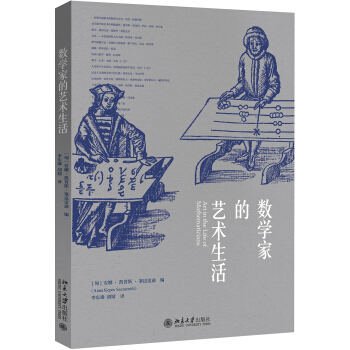
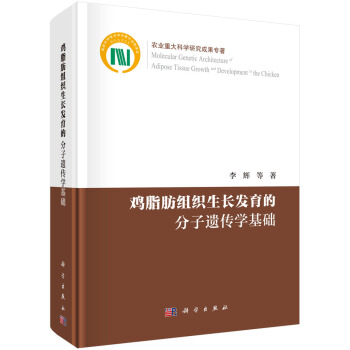
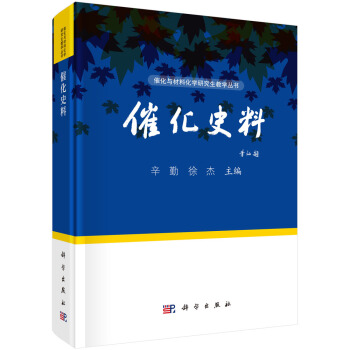

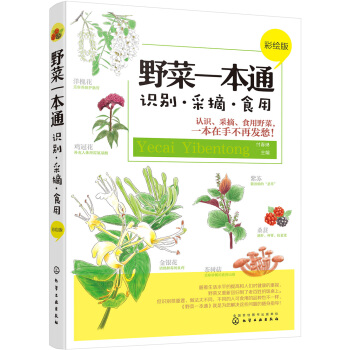
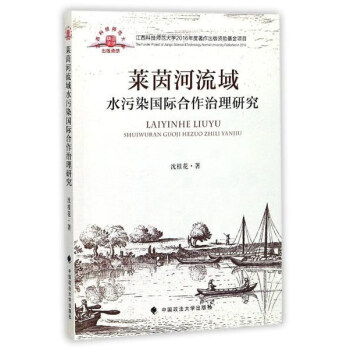
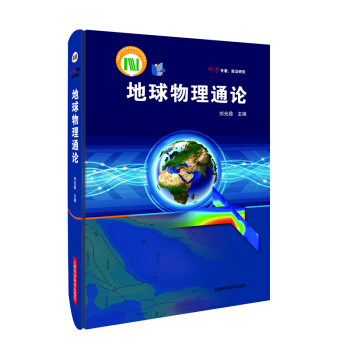
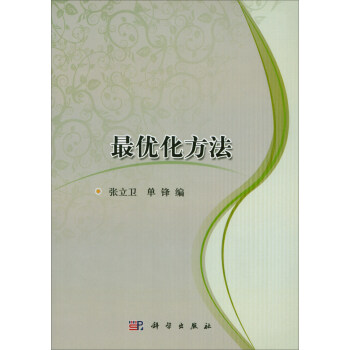

![西伯利亞資源地理 [Siberian resources geography] pdf epub mobi 電子書 下載](https://pic.tinynews.org/12267316/5a2e449cN945dd725.jpg)
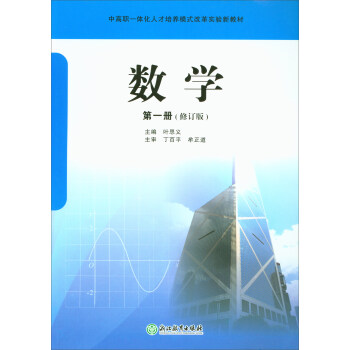
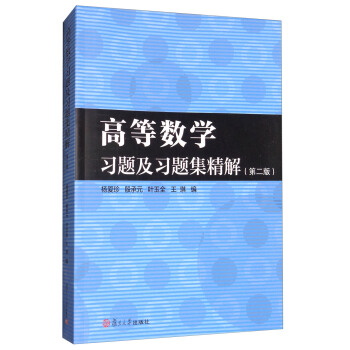
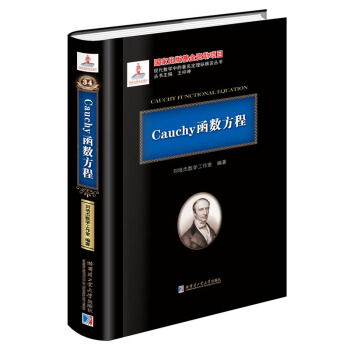
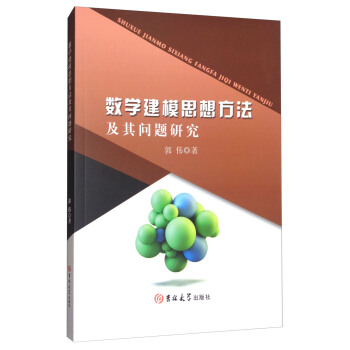
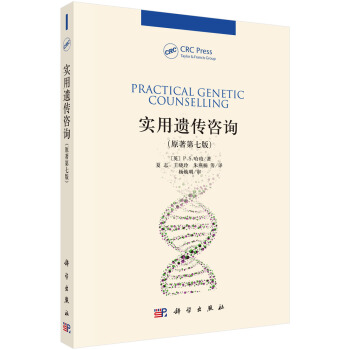
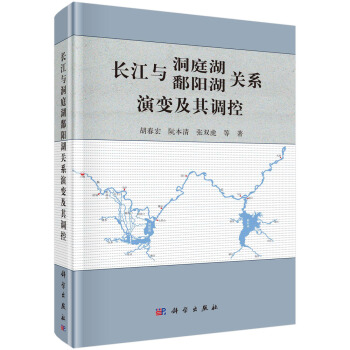
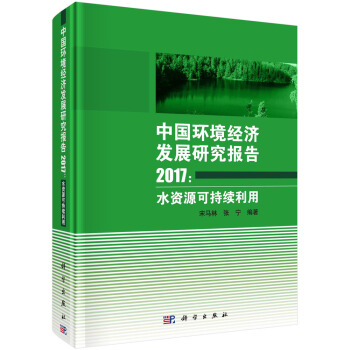
![環境管理藍皮書:中國環境管理發展報告(2017) [Annual Report on Development of Environmental Management in China(2017)] pdf epub mobi 電子書 下載](https://pic.tinynews.org/12269583/5a71aa9bN7545adb8.jpg)
![蜜蜂:諾貝爾獲奬者弗裏希科普代錶作 [BEES:THEIR VISION,CHEMICAL] pdf epub mobi 電子書 下載](https://pic.tinynews.org/12269588/5a13d71cNdbf8ffea.jpg)
